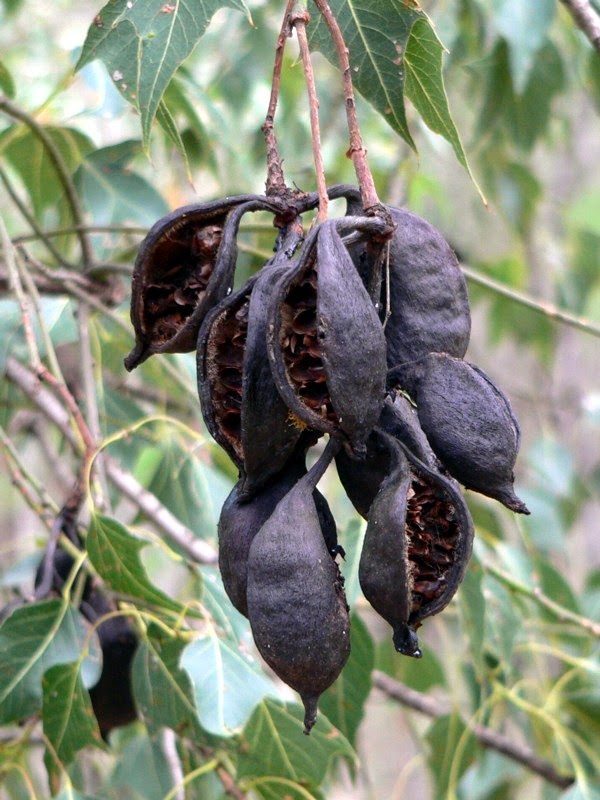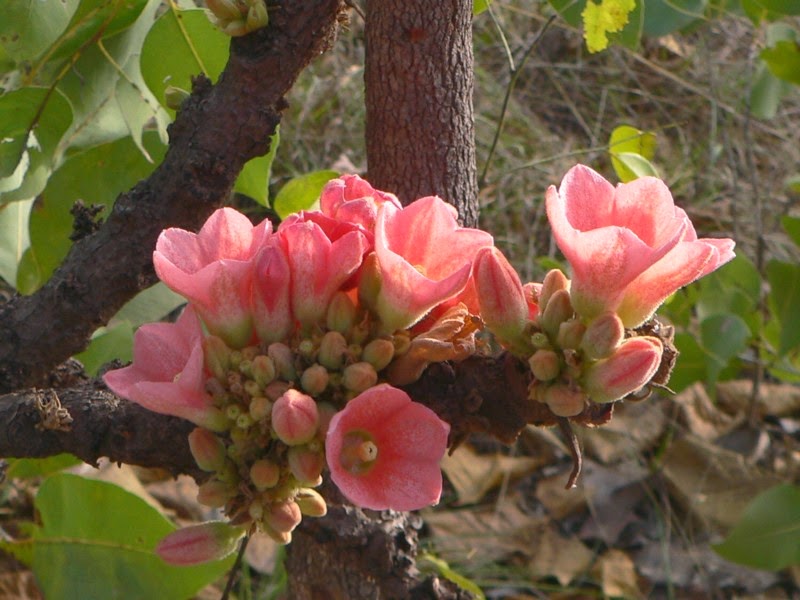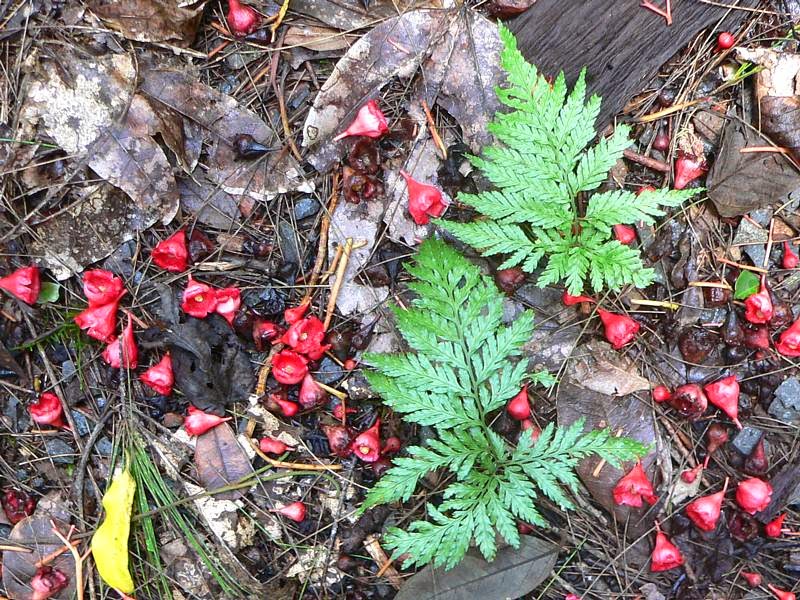With a title like that you might reasonably suspect a joke on my part, but in fact this is the latest in my sporadic series on favourite trees; you can find the most recent instalment here and find earlier ones from there if you so wish.
I grew up with some of the Australian children's classics, including May Gibbs'Snugglepot and Cuddlepie series, very whimsical (and somewhat downright scary) and very Australian, with the characters based on bush flowers and fruits. I'll leave you to investigate further if it's new to you, but one thing that always intrigued me was their use of Kurrajong pods as boats. In Adelaide we didn't know Kurrajongs, but when I moved to eastern Australia I was delighted to get to know them, and the members of the genus Brachychiton are now among my favourite trees. Around Canberra and onto the western slopes Kurrajong B. populneus grows in a range of drier situations from rocky hillsides to deep plains soils. (The myth that Kurrajong indicates the presence of limestone appears to be just that.)
| Kurrajong near Molong, New South Wales. A lovely spreading tree with soft glossy green foliage that shines in the breeze. |
 |
| The seed pods, the May Gibbs boats of my childhood reading, contain stinging hairs, but the seeds if winnowed can be roasted and used in a beverage. |
The genus name Brachychiton translates as a short Ancient Greek tunic, in somewhat whimsical reference to the loose covering of the seed. Populneus is a reference to the supposedly poplar-like nature of the foliage.
| Kurrajong leaves; the three lobed form is often a character of younger trees. These leaves are quite soft, unexpectedly so for an Australian dry country plant. |
The foliage is a reason that Kurrajongs are often left in otherwise largely treeless rural landscapes; the leaves are valuable drought fodder and branches are cut in hard times to feed sheep and cattle. The tree recovers.
The origin of the word Kurrajong itself is somewhat confused. It seems that it is probably one of the few words remaining of the language of the people who lived where Sydney now stands; their name or language might have been Dharug, as is often asserted, but not all experts are convinced. However the word seems to have referred to a fibre used for lines or fishing nets, and deriving from a native Hibiscus (H. heterophyllus). Somehow the word got to be used for 'our' Kurrajong, which grew on the Cumberland Plain to the west of Sydney. It has also been applied at times to species of Pimeleas which, like the Kurrajong, were also valued for their fibrous bark. Too often we didn't pay enough attention to what we were being told and I've wondered if many of our forebears merely confused the word for the fibre with the various plants it derived from.
However the Kurrajong is just one of 31 Brachychiton species, all of which are Australian but for one New Guinea species. Until 2006 they were broadly accepted as being in the family Sterculiaceae, but then a detailed genetic study determined that Sterculiaceae was really an artificial family, and most of its members (along with those of other related families) were moved into the hibiscus family, Malvaceae. That seems to have since been generally accepted.
The flowers are distinctive - and not very reminiscent of hibiscus, it must be noted. They comprise a tube of fused sepals (not petals, it seems, despite their colouration).
 |
| Kurrajong flowers, Pilliga National Park, New South Wales. |
Others are more brightly coloured.
 |
| Red-flowered Kurrajong B. paradoxus, Litchfield National Park near Darwin. A small tree of the tropics. |
At the other habitat extreme from the wet forest Flame Tree, there is a Brachychiton native to the harsh central deserts too.
| Desert Kurrajong B. gregorii, Mereenie Loop, central Australia. The species name is for Augustus Gregory, the explorer who collected the type specimen far to the west on the Murchison River in 1848. |
| Desert Kurrajong fruit - the close relation with Kurrajong is obvious. |
Perhaps the most widely recognised member of the genus however is endemic to inland south-eastern Queensland. The Queensland Bottle Tree is instantly recognisable by its oddly bulbous trunk at its mid-height, which intrigued the explorer Thomas Mitchell when he encountered it near where Roma now stands in 1848 (coincidentally the same year that Gregory discovered the Desert Kurrajong on the far side of the country). He considered, understandably, that it "looked very odd".
| Queensland Bottle Tree B. rupestris near Tambo. |
My love affair with kurrajongs and bottle trees is not wholly platonic - our relatively small front and back yards host a Kurrajong and Queensland Bottle Tree respectively, and they're showing every sign of returning our affection by thriving.
I hope you can share my enthusiasm for them.
BACK ON THURSDAY
